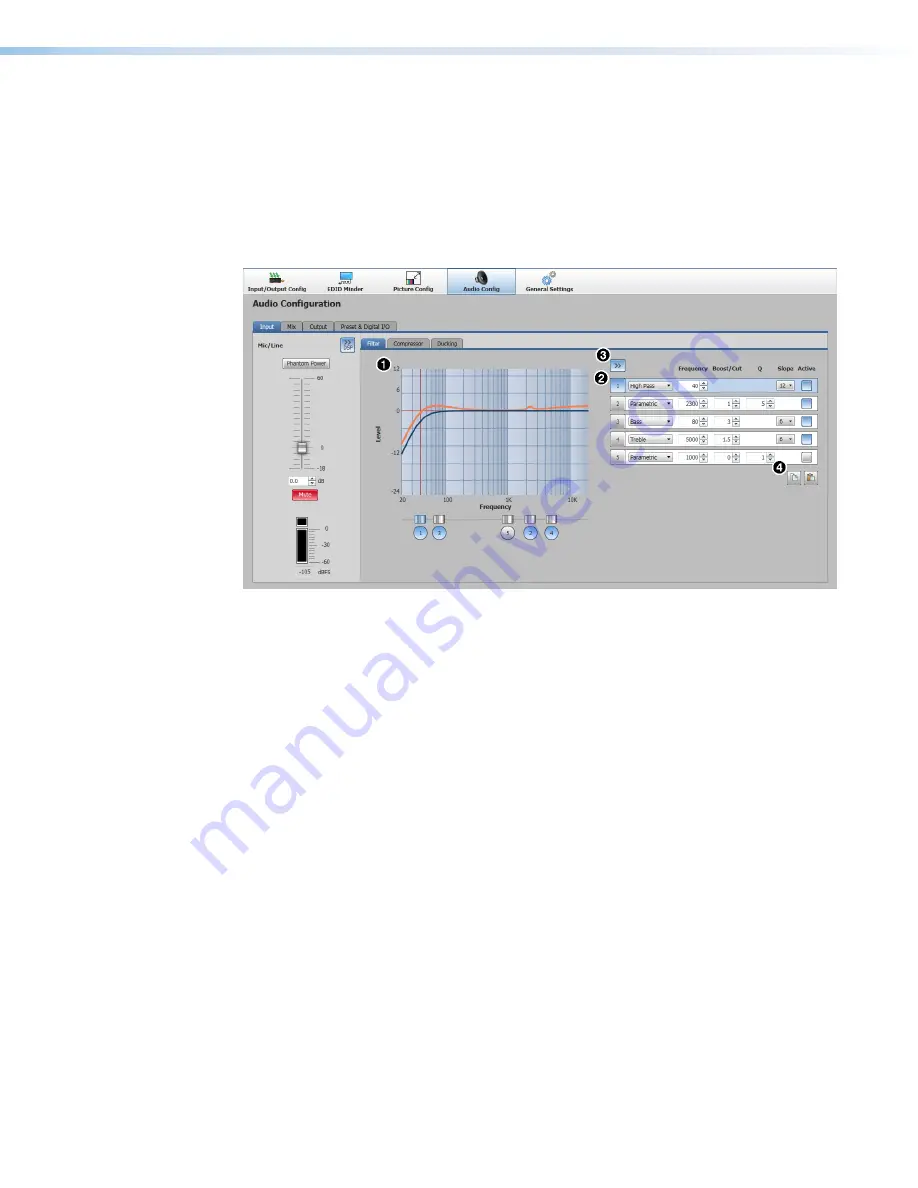
Input DSP Window
The DSP window can be accessed by clicking the
DSP Icon
6
on
page 51), and opens to the
Filters
tab. Clicking the
DSP Icon
hides the Input
DSP window. Each input channel contains its own DSP. All channels contain filter and
compressor DSP, with the
USB Communications
and
Mic/Line
channels containing
ducking as well.
Filters
Figure 57.
DSP Filter Tab
1
Filter Graphic
— Visually represents the active and inactive filters from the filter list.
Also provides frequency, boost/cut, and Q control for filters via handles in the graph and
numbered sliders directly below the graph.
2
Filter List
and Parameters
— The Mic/Line input contains 5 slots for filters, while the
other line inputs contain 3. Each of the slots allows for any of the available filters to be
applied and adjusted. Duplicate filters are allowed in multiple slots. All parameters for
each filter can be adjusted in this list. In addition, clicking the square in the
Active
column engages the selected filter. A blue square in the
Active
column represents an
active filter. Filters are inactive by default. Available filters include:
•
High Pass
•
Treble (Shelving)
•
Low Pass
•
Parametric
•
Bass (Shelving)
3
Show Filter Selection and Parameters
— When this button is engaged (blue), the
filter drop-down menus and available parameters are visible. When disengaged, the
filters and parameters are hidden. Filters and parameters are visible by default.
4
Copy and Paste
— Allows a filter type and parameters to be copied and pasted from
one slot to another.
figure 57.
DSP Filter Tab
MediaPort 200 • Product Configuration Software (PCS)
53






























